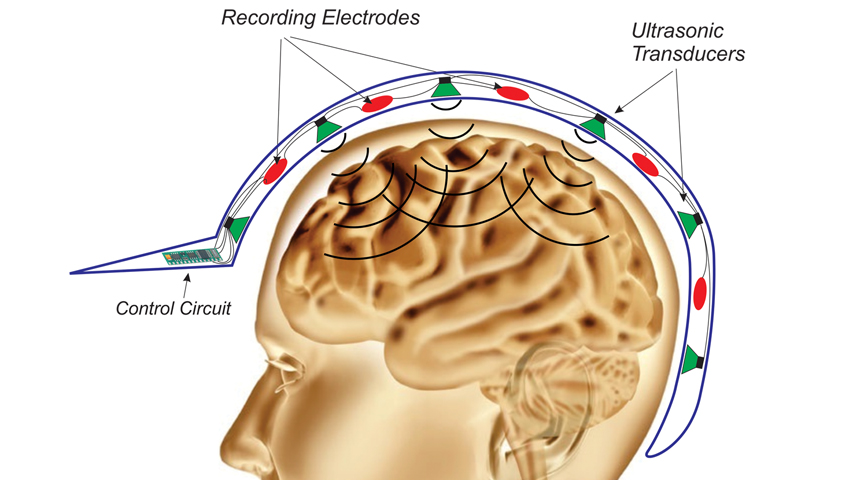Research Suggests Noninvasive Way To Suppress Epileptic Seizures
By Sammi Jamison

This wearable device would noninvasively stop the progression of seizure activity in the brain by launching a random spatio-temporal pattern of ultrasonic waves from outside of the brain to target populations of neurons in various locations across the cortex.
Carnegie Mellon University and University of California, Berkeley researchers have introduced a noninvasive approach that could mitigate epileptic seizures for the more than 50 million people who suffer from epilepsy.
Maysam Chamanzar, an assistant professor of electrical and computer engineering at CMU, and Reza Alam, professor of mechanical engineering at UC Berkeley, recently published their work in the Royal Society Journal Interface.
Patients of all ages diagnosed with epilepsy often experience recurrent seizures triggered by the firing of a large collection of neurons in the brain. This ultimately generates a high-energy wave that spreads across the brain's surface.
Chamanzar, Alam and Ben Zhang, a doctoral student in mechanical engineering at UC Berkeley, based their approach on a wave phenomenon called Anderson localization. The phenomenon explains how random disruptions of a medium can decrease waves, such as how ocean waves lose their energy as they spread over irregular topography. Chamanzar and his colleagues prove the principle can be applied to epileptic seizures.
.
In their study, the scientists used simulated activity from a tonic-clonic seizure, formerly known as a grand mal seizure. Then, they disrupted the activity by applying changing parameters governing the firing rates of neurons in the brain.
"Mitigating seizures right at the starting moment is crucial. Using our technique, we do not need to have a-priori knowledge of where exactly the seizure originates. As soon as the onset of a seizure is detected, our method can suppress the seizure waves effectively," Chamanzar said.
Chamanzar and his colleagues discovered the technique is most effective when focusing on both decreasing the strength and frequency of seizures. Chamanzar said this suppression method is significant because it can immediately provide relief for patients.
The team envisions that doctors could test this method by having epileptic patients wear a device to noninvasively stop the progression of seizure activity. The device would detect the onset of seizures and launch a random pattern of ultrasonic waves to target neurons.
"Our proposed method is the first step toward noninvasive suppression of seizures using a novel modality," Chamanzar said. "When it comes to modulating the brain activity to mitigate a disorder, we need to think about new paradigms for interfacing that do not suffer from the limitations of conventional invasive methods."
Chamanzar is a member of the university's BrainHub initiative, an effort that brings together CMU's strengths in biology, computer science, psychology, statistics and engineering to study how the structure and activity of the brain give rise to complex behaviors, and to develop new technologies that advance and build upon this research.